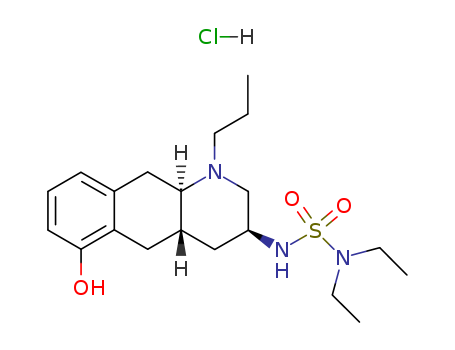- Chemical Name:Quinagolide hydrochloride
- CAS No.:94424-50-7
- Molecular Formula:C20H33N3O3S*ClH
- Molecular Weight:432.027
- Hs Code.:
- DSSTox Substance ID:DTXSID20241478
- Wikipedia:Quinagolide
- NCI Thesaurus Code:C73310
- Mol file:94424-50-7.mol
Synonyms:CV 205-502;CV-205-502;CV205-502;N,N-diethyl-N'-(1,2,3,4,4a,5,10,10a-octahydro-6-hydroxy-1-propyl-3-benzo(g)quinolinyl)sulfamide hydrochloride, (3alpha,4aalpha,10abeta)-(+)-isomer;N,N-diethyl-N'-(1,2,3,4,4a,5,10,10a-octahydro-6-hydroxy-1-propyl-3-benzo(g)quinolinyl)sulfamide, (3alpha,4aalpha,10abeta)-(+-)-isomer;Norprolac;quinagolide;quinagolide hydrochloride;quinagolide hydrochloride, (3alpha,4aalpha,10abeta)-(+)-isomer;quinagolide hydrochloride, 3alpha,4aalpha,10abeta-(-)-isomer;quinagolide, (3alpha,4aalpha,10abeta)-(+-)-isomer




